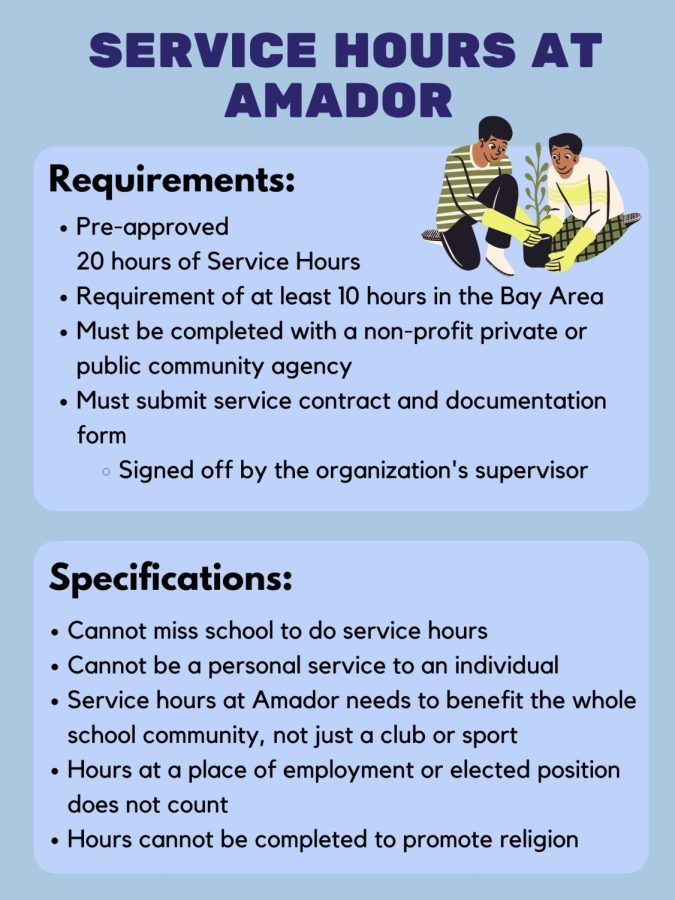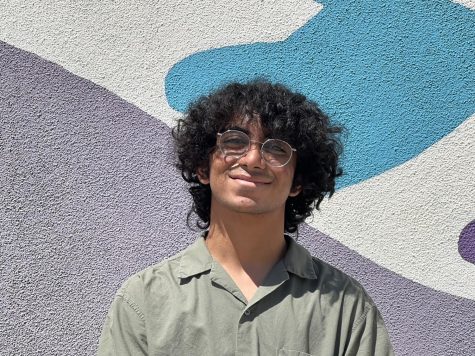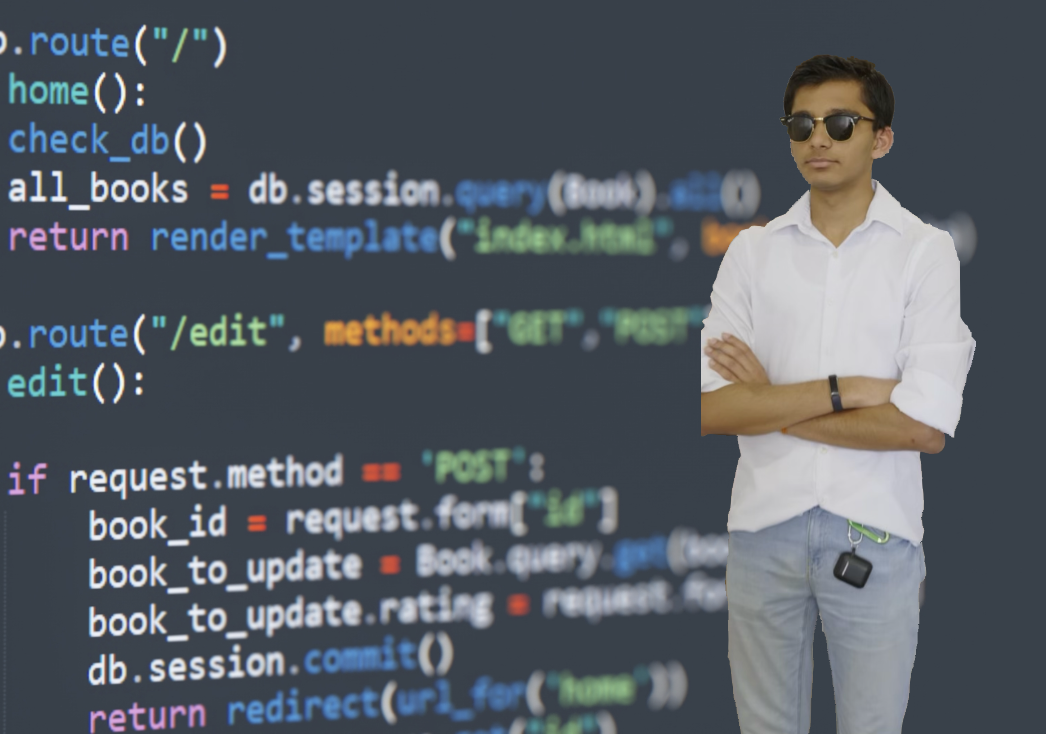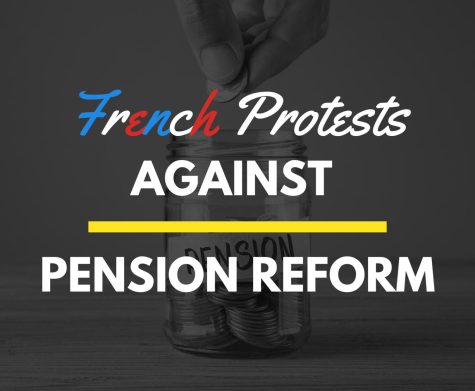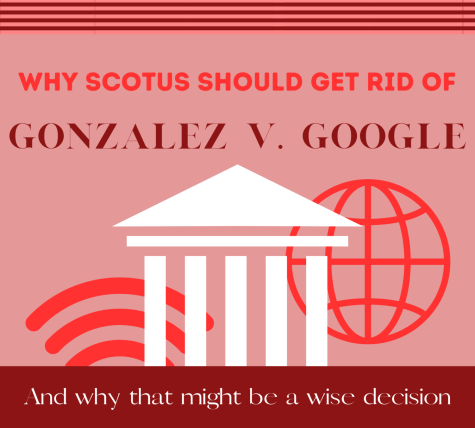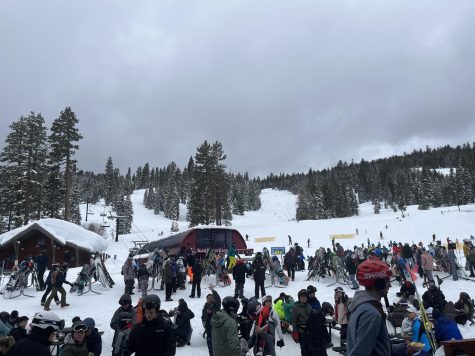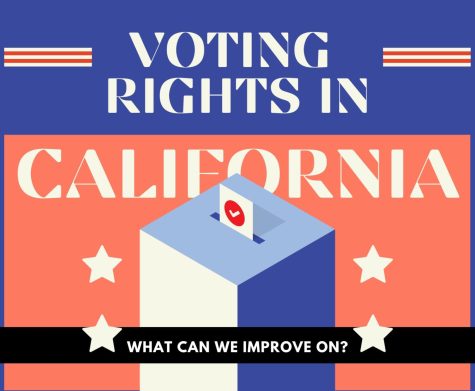Senior Service Hours–What do they really do?
There are many requirements and specifications that need to be met in order for volunteer hours to count towards the hours seniors need to graduate.
May 18, 2022
The word “voluntary” denotes an action “done, given, or acted out of one’s free will,” but the essence of the term, which lies in the freedom to choose and decide, is often tampered with in the context of high school-related academics and activities.
Take for example a class assigned reading coupled with worksheets. The content might be dull and not of one’s particular interest, but it is imperative that a student peruse it extensively, for a core factor of their future- their grades- count on a good performance on assignments and standardized tests.
However, a lot of students don’t feel particularly enthusiastic about the notion of forced reading because it is so steeped in expectations and consequences that students feel unmotivated to the point of general burn out, and “reading for pleasure has been treated as an afterthought, something we encourage but don’t really make time for,” said Pernille Ripp, a seventh-grade Language Arts who has written multiple books on teaching, in an interview with Cult of Pedagogy.
While close reading is a core component of enhancing a student’s ability to comprehend and analyze both literary and verbal material, forcing students to comply with a choiceless system that limits the scope of mental thinking and freedom often ruins the prospect of students growing an appreciation for literature and to even simply read for pleasure.
A similar contradictory dilemma is unfortunately prevalent in the system of volunteerism required in a majority of high schools throughout America.
“Whenever I ask kids, ‘What’s the one thing you wish all teachers of reading would do?’ (they say) ‘Choice.’” said Ripp.
Volunteer hours refer to a required set of hours that a high school student must spend volunteering for various causes in order to be eligible for graduation. The experience varies from student to student; while some are very menially inconvenienced and coupled with a strong knowledge of high school volunteerism are able to finish their hours relatively quickly, other students struggle due to the rigidity of the system, additional obligations, and sometimes simply due to the burden of its status as a requirement for graduation.
Often one of the greatest hurdles that students face in finishing their volunteer hours is the fact that there is a set period of time between which volunteering can be counted towards volunteer hours- From the summer right before senior year till graduation. Anything before the set time period doesn’t count, and for Marie Lee (‘22), who extensively volunteered from Freshman to Junior year all the way up until Senior year, these time constraints made required volunteering a stressful ordeal to be dealt with as soon as possible rather than the enriching experience it’s supposed to be.
“I wish they would take hours starting from Freshman year, because then I feel like people would actually volunteer more in general, and be motivated to. If you start just volunteering senior year, you don’t feel compelled to continue to do it,” said Lee (‘22).
For Lee, the root cause of such a predicament was a general lack of information about the subject, especially considering the fact that she currently attends the Pleasanton Virtual Academy. The situation is very double-faceted, for the school tries their best to spread as much awareness as possible about the limits upon volunteer hours through constant newsletters and extended volunteering opportunities, but Lee’s case evidently demonstrates an existing lack of adequate dissemination of information relating to volunteer hours.
In other cases, what might seem to be appropriate volunteer work is often not accepted as required hours by high schools. Our school requires volunteers to have pre-approved their work if they wish to receive hours for it, and often the guidelines for approval are stringent- normal volunteerism doesn’t cut it, organization-led efforts are often the only ones accepted for hours. Thus, while seniors such as Aryan Arora (‘22) completed their volunteer hours without a large degree of difficulty, they still lament the fact that their other work wasn’t eligible for approval- “…maybe make it more open-ended on what counts as volunteering. If you go out and help clean up a whole park, that could count as volunteering because you’re helping out your community.” said Arora (‘22).
Sometimes students don’t even have the time to work towards their volunteer hours, as their personal obligations- those of work, family, and passions- come in the way of fulfilling the stringent graduation requirement.
In low-income districts such as the Copiague School District in New York, some students simply do not have the economic situation to afford working for free, as they “work to make money because a lot of them are supporting themselves,” according to superintendent William R. Bolton, in an interview with The New York Times.
Bolton has since enacted a reform plan in his district, one aimed at resolving the precarious dilemma of figuring out what work should be considered volunteerism, and how schools should accommodate students who cannot afford to threaten their personal lifestyles by indulging in mandatory volunteer work.
”As long as they are not paid and make a formal presentation about the work they learned, they get credit for it,” said Bolton.
Volunteering has largely lost its existential meaning as the “right” to choose what cause one wants to dedicate themselves to has become restrictive in the face of volunteer hours. As Jayson Stoller, President of Roselyn High School in New York, so aptly puts it, “part of the argument against volunteer hours is the kids’ right not to do involuntary servitude.”
The mandate on high school volunteering is not wholly apathetic to the wellbeing of students, however- Countless young men and women all across the country grow a passion for volunteering every year due to their exposure to the practice, specifically through the high school requirement to finish this certain set of hours.
“It was actually kind of refreshing to actually just do stuff, as a lot of it was hands-on…I think [voluntary hours are] kind of good because they build a lot of community and just help out those in need,” said Arora (‘22).
The students that do feel like the system is not truly fair to them and their circumstances cannot be discounted however, for they represent the student populace that has begun to lose trust in the concept of volunteering. To them, it has become a matter more akin to ‘mandatory community service’ rather than ‘volunteerism’, according to Geoffrey N. Gordon, superintendent of the Port Washington school district in New York.
How can we combat such a double-edged, multi-faceted problem without eliminating the intrinsic meaning behind the practice? Many have found themselves stumped at the approach of this question, as to install greater regulation upon volunteer hours would only serve to further restrict students’ freedoms to choose and decide their own path of unconditional volunteerism, while remodifying the concept of mandated hours would deter from their purpose of rousing motivation and a passion for volunteerism within the individual citizen.
There is a rather simple answer to this question, one that often escapes people’s thoughts in their search for more sophisticated solutions; to simply expand the campus presence of the practice. Some of the first problems that would have to dealt with would be school-based limits upon when hours can be acquired for the requirement, and what types of volunteer work can be accepted by the school district; It is evident that in this case, that Bolton’s idea of ‘verifiable volunteerism’ and a general extension of volunteering period starting from Freshman year of high school would be the wisest ways to ensure a student-friendly yet motivational mandation of volunteer hours.
Beyond true legislation, the school can expand upon its current efforts at spreading information and opportunities for volunteer hours through even the most trivial of measures such as spreading flyers, that can focus on upcoming deadlines for concurrent opportunities or even showcase straight up advertisements detailing a need for high school volunteers. Ensuring student attention is of utmost importance in this endeavor, and through the massive news media presence in Amador, high schoolers can very easily and conveniently be made aware of all news concerning volunteer hours.
Yes, the school administration is to some degree managing to implement the aforementioned devices in order to help their students reach a semblance of awareness on the subject, but greater success can be achieved with the same devices if the school’s efforts were further radicalized and made pro-active. In fact, about 75% of Port Washington’s 1,200 students were able to perform 25 to 75 hours of community service simply due to active encouragement for the essential value that is volunteering, and to a lesser extent, the distinct lack of a mandate, returning true meaning to the concept of ‘voluntary’ service.
In the end, mandatory volunteerism for high schoolers, even after decades of discussion and calls for change, is still in need of a reform, one that would prevent irrational stressful periods of hectic volunteering from seniors, and at the same time ensure a nation-wide motivation in the youth for the cause of bettering the society around them through volunteerism. Perhaps one day every high school student in America will be able to confidently declare that the effort they put into working for a charitable cause was of their own accord- not due to a mere requirement, but of their own choice, built around their own passions and past experiences.

